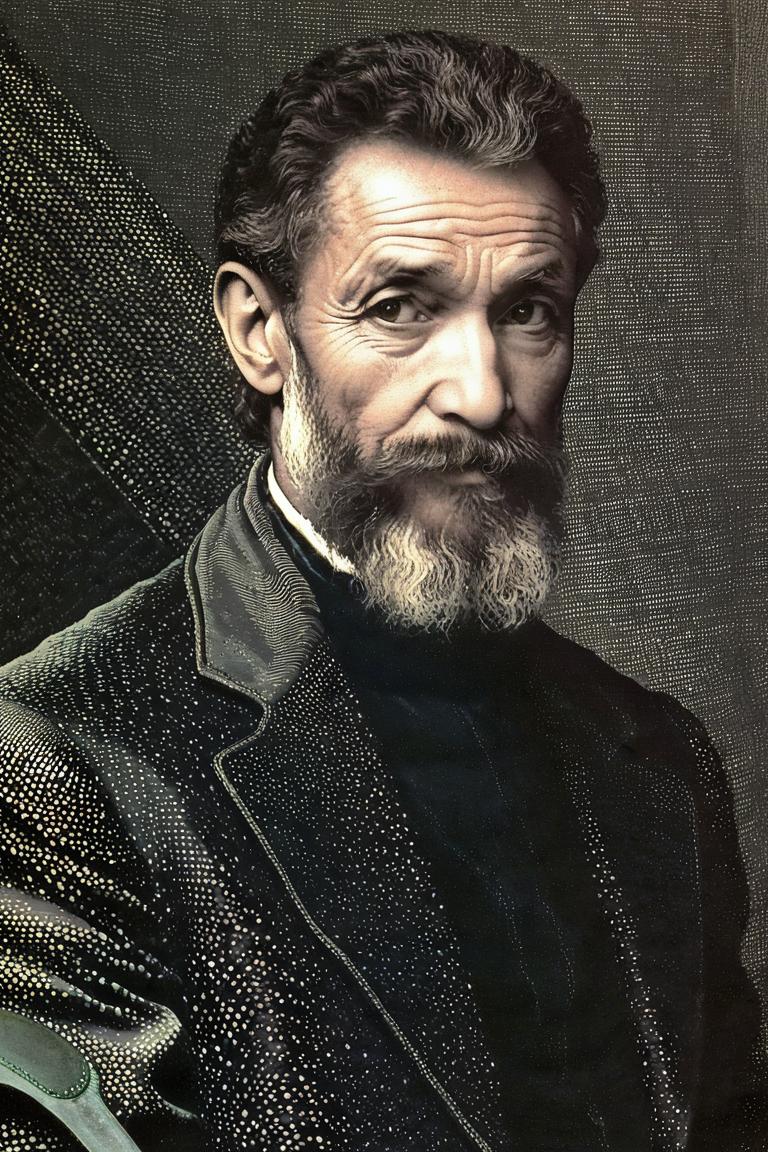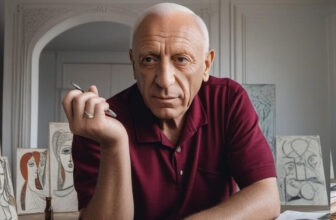
Michelangelo: Fascinating Facts About the Master of the Renaissance
Few names in the history of art evoke as much reverence and admiration as Michelangelo Buonarroti. Born in 1475 in Caprese, Italy, Michelangelo was a painter, sculptor, architect, and poet who left an indelible mark on the Renaissance and Western art as a whole. His masterpieces, such as the Sistine Chapel ceiling and the statue of David, are celebrated worldwide. However, beyond his widely known achievements, there are countless intriguing aspects of his life and work that make Michelangelo an endlessly fascinating figure. Here, we delve into some lesser-known facts about the genius whose influence transcends centuries.
1. A Child Prodigy
Michelangelo’s artistic talent was evident from a young age. Despite his father’s initial resistance, believing art to be a lowly trade, Michelangelo’s innate skill was undeniable. At just 13, he became an apprentice to Domenico Ghirlandaio, a prominent Florentine painter, where he honed his skills. Soon, Lorenzo de’ Medici, one of the most powerful patrons of the arts, took notice of his work and invited him to study in the Medici gardens. This early exposure to classical sculptures and intellectual circles profoundly influenced his future creations.
2. A Rivalry with Leonardo da Vinci
Michelangelo’s brilliance often brought him into competition with other great artists of his time, including Leonardo da Vinci. Both were commissioned to paint frescoes in Florence’s Palazzo Vecchio in the early 16th century. Michelangelo’s work depicted a scene from the Battle of Cascina, while Leonardo worked on the Battle of Anghiari. Though neither project was completed, the rivalry between the two giants of the Renaissance was legendary, with documented instances of public disagreements and mutual disdain.
3. Michelangelo’s Self-Criticism
Despite his unparalleled skill, Michelangelo was his harshest critic. He often destroyed drawings and sketches that he deemed imperfect, leaving only a fraction of his preparatory work for posterity. This perfectionism extended to his sculptures and paintings; he constantly sought to refine and improve his creations, even if it meant altering completed works.
4. The Hidden Self-Portrait
Michelangelo was known to embed subtle elements in his art, and one of the most fascinating examples is the hidden self-portrait in “The Last Judgment” fresco in the Sistine Chapel. In the painting, he depicted his own flayed skin held by Saint Bartholomew. Scholars interpret this as a reflection of Michelangelo’s complex relationship with religion, mortality, and his artistic identity.
5. A Reluctant Painter
Although Michelangelo is celebrated as one of the greatest painters of all time, he considered himself primarily a sculptor. When Pope Julius II commissioned him to paint the Sistine Chapel ceiling, Michelangelo initially resisted, feeling unqualified for such a monumental task. Nevertheless, he transformed the ceiling into one of the most iconic masterpieces in art history, completing it in just four years (1508-1512).
6. The David: A Symbol of Perfection
Michelangelo’s statue of David is a marvel of Renaissance art, embodying human strength and beauty. Carved from a single block of Carrara marble, it stands over 17 feet tall and captures the biblical hero in a moment of contemplation before battle. What makes this sculpture even more remarkable is that Michelangelo worked with a block of marble previously considered flawed and unusable by other artists.
7. Architectural Genius
In addition to his contributions to painting and sculpture, Michelangelo was a visionary architect. His most notable achievement in this field is the dome of St. Peter’s Basilica in Vatican City. Though he did not live to see its completion, his innovative design remains a defining feature of the Roman skyline and an enduring symbol of Renaissance architecture.
8. A Master of Anatomy
Michelangelo’s understanding of the human body was unparalleled, a skill he developed through meticulous study of anatomy. He performed dissections on cadavers to better understand muscle structure, bone placement, and physical proportions. This knowledge is evident in his sculptures and paintings, which portray the human form with extraordinary accuracy and dynamism.
9. Poetry and Prose
While Michelangelo is primarily celebrated for his visual art, he was also a prolific poet. He wrote over 300 poems, often exploring themes of love, spirituality, and artistic struggle. His poetry offers a glimpse into his introspective and emotional nature, providing an additional dimension to our understanding of the artist.
10. A Frugal Lifestyle
Despite his immense wealth and fame, Michelangelo led a surprisingly modest life. He was known to dress plainly, live in sparse accommodations, and save his earnings. This simplicity was a reflection of his singular focus on his work, as he prioritized art above all else.
11. Controversial Commissions
Michelangelo’s career was not without its challenges and controversies. His work on Pope Julius II’s tomb, for example, spanned over 40 years and was plagued by interruptions and disputes. The final design was far less grand than originally intended, yet it still includes the magnificent statue of Moses, which remains one of his most celebrated works.
12. A Long and Prolific Life
Michelangelo lived to the age of 88, a remarkable lifespan for someone in the 16th century. Over his long life, he worked tirelessly, producing an astonishing body of work that continues to inspire and captivate audiences worldwide. Even in his later years, he remained active, dedicating himself to architectural projects and religious art.
13. Influence on Future Generations
Michelangelo’s impact on art and culture is immeasurable. His mastery of form, emotion, and technique set new standards for artistic excellence, influencing countless artists in the centuries that followed. From Baroque sculptors like Gian Lorenzo Bernini to modern creatives, his legacy endures as a benchmark of artistic genius.
Michelangelo Buonarroti was far more than an artist; he was a visionary whose work redefined the boundaries of creativity and human achievement. His life and art are a testament to the power of dedication, imagination, and skill. Whether through the awe-inspiring frescoes of the Sistine Chapel, the sublime beauty of David, or the poetic lines of his sonnets, Michelangelo continues to speak to the human spirit, reminding us of the heights that can be reached through perseverance and passion.





